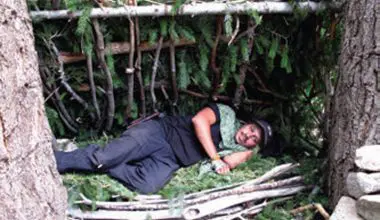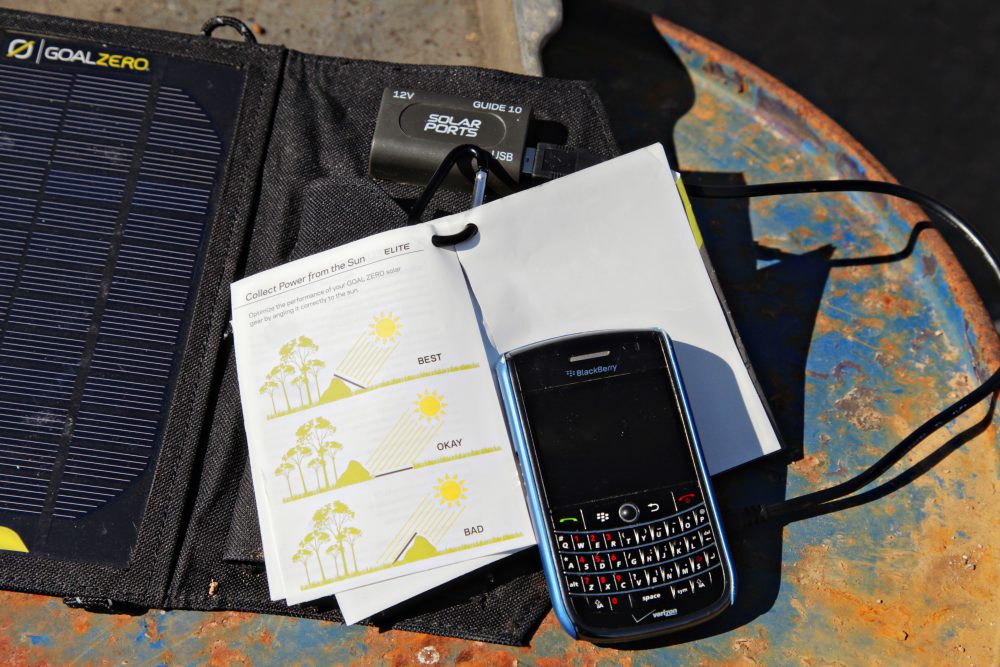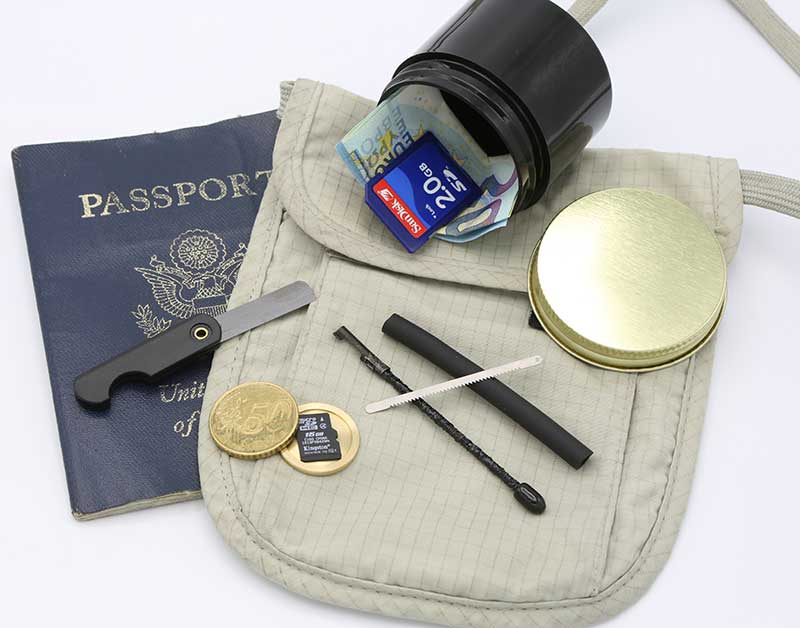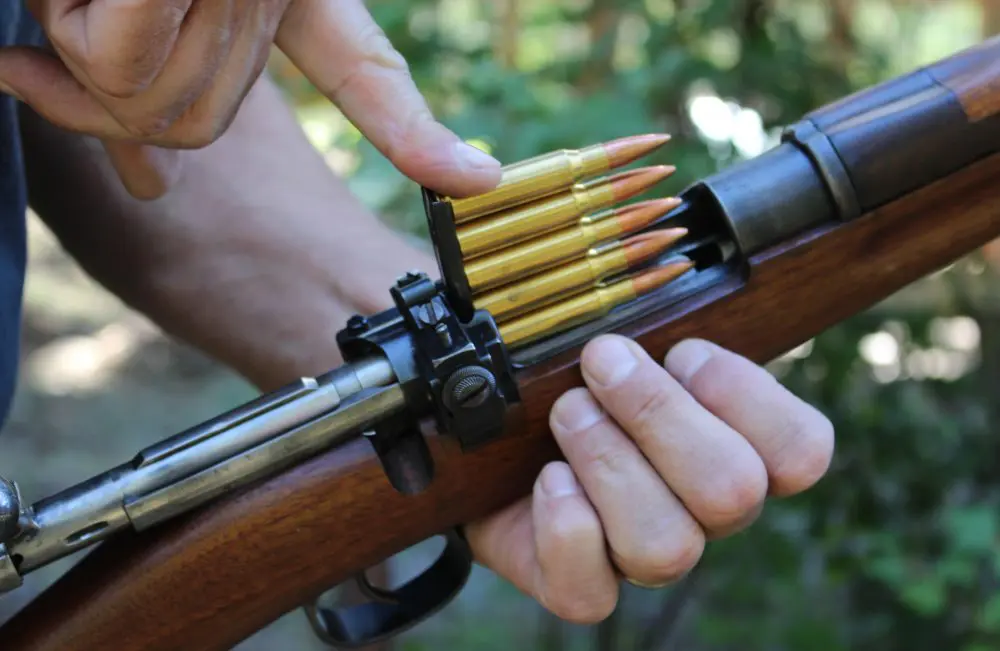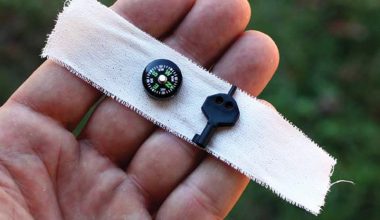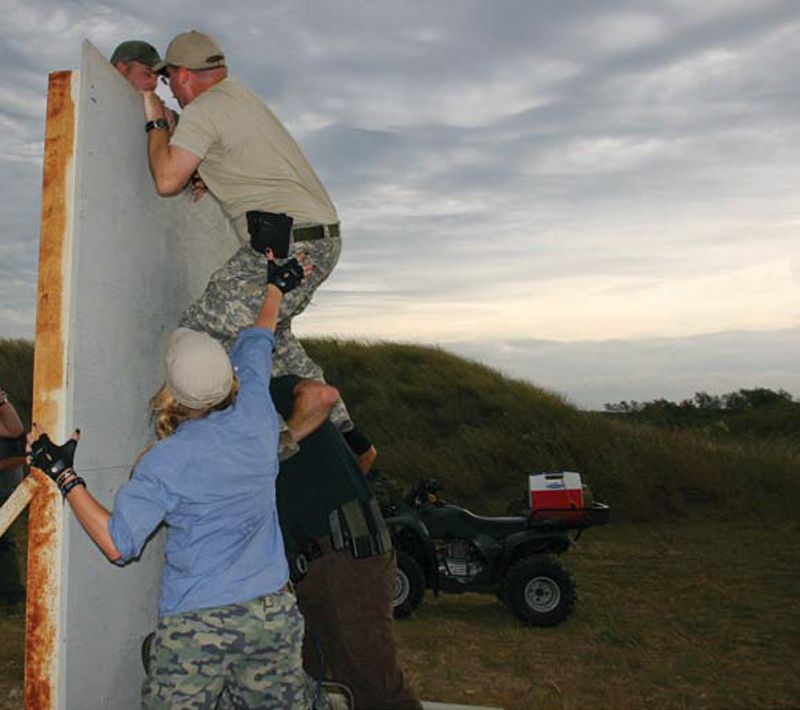
While opinions differ on exactly what it takes to survive a situation like this, the real determinants are the skills, abilities and preparation of the individual.
To give people the opportunity to test their preparations for such an event, Tiger Valley Firearms Training has hosted a bug-out drill for the past few years. The premise of the drill is simple: you must “bug out” on foot with only what you can carry, and traverse 15 miles while facing a myriad of challenges.
Some of these challenges involve shooting, others involve maneuvering over or through obstacles, and some are survival-related tasks ranging from medical skills to making fire to
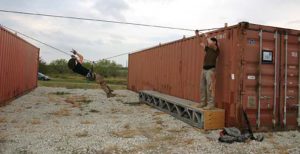
retrieving or acquiring an object.
Table of Contents
TIGER VALLEY FIREARMS TRAINING
Tiger Valley is run by TJ Piling, a retired Garland, Texas police officer who has seen both sides of the gun many times in his various assignments with SWAT, narcotics, and undercover.
Piling also served as a firearms trainer, and that is now his full-time avocation at Tiger Valley. He presides over a staff that includes instructors with military and LEO experience, and he offers courses in handguns, long arms, and precision rifle. His 220-acre facility in Waco, Texas, where he holds the Bug- Out Drill, boasts multiple ranges up to 1200 yards and has hosted everything from handgun courses to State Department Designated Marksman classes.
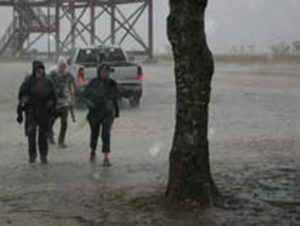
BUG-OUT DRILL COURSE
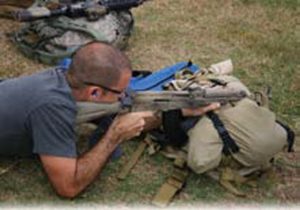
TJ set up this event both to test endurance and require a diversified mix of skills and tools for multiple activities. This included two laps around Tiger Valley’s facility and a march on an outside road, covering a total of 15 miles. Participants were given the option of leaving their long guns at the training center before heading to the outside road. Those who did not have the means to effectively conceal their long guns left them, while those who had means of hiding them didn’t.
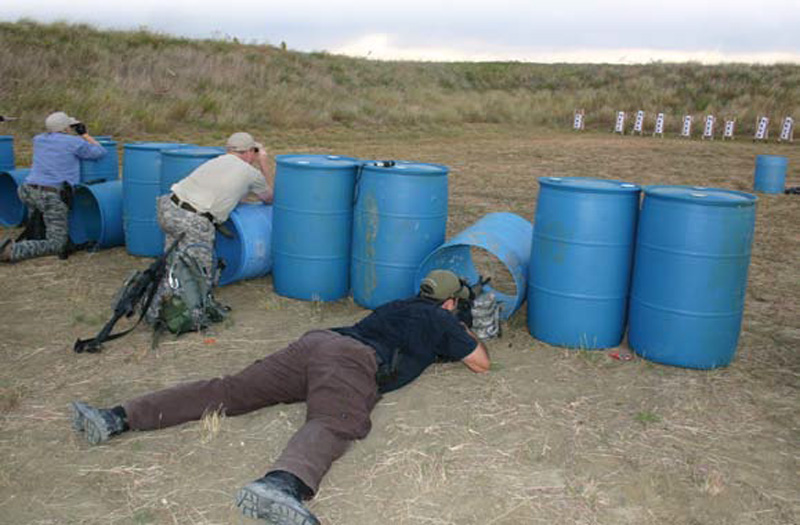
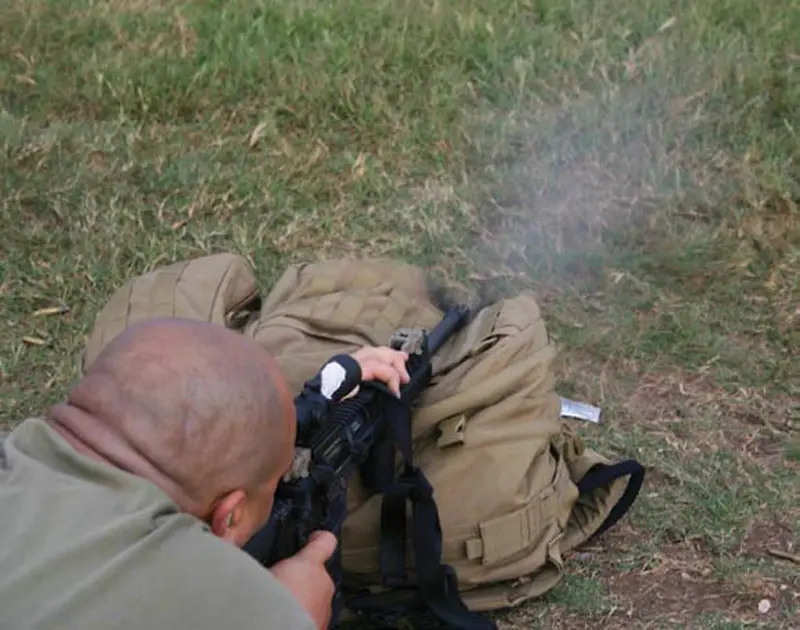
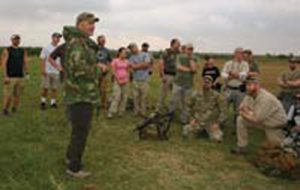
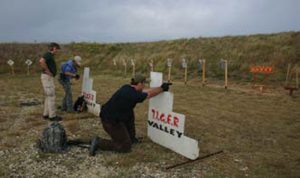
As the participants proceeded through the course, they faced numerous challenges. Failure to complete any challenge added to their overall completion time, which determined their standing in the drill. In the case of shooting events, any missed shots added to their final time.
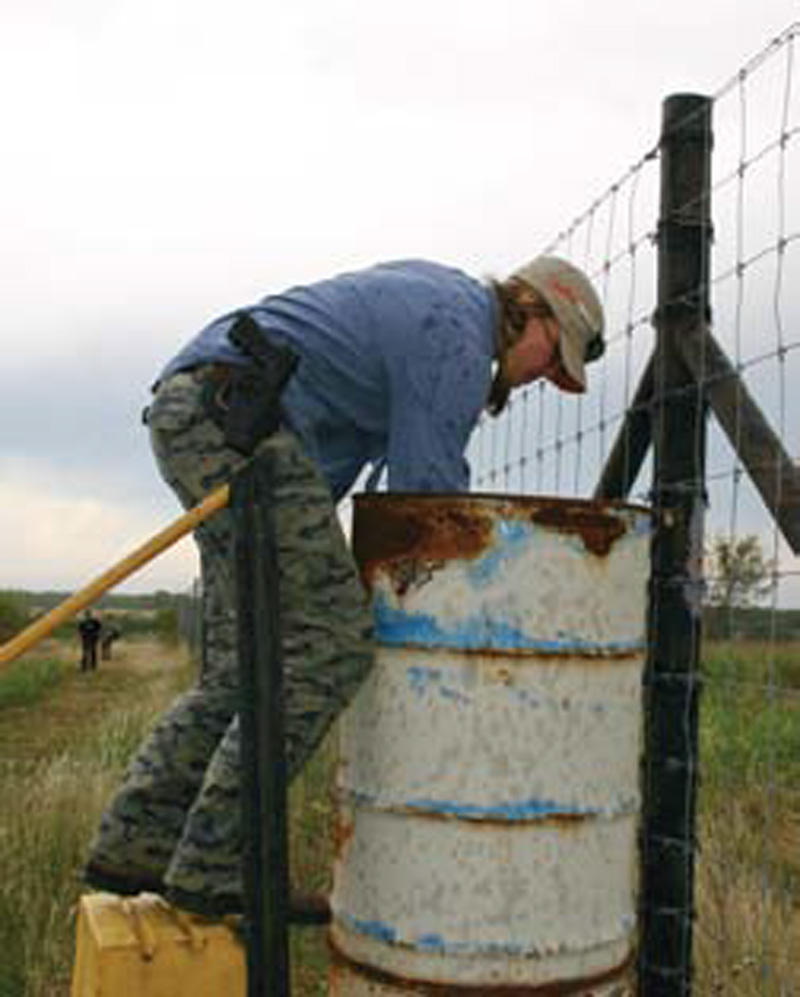
GENESIS
TJ came up with the idea and format of this event after reading multiple online discussions that indicated many people have preconceived notions about how disasters and civil unrest happen. He noticed that people often imagined a crisis occurring in a manner that would favor their particular preparations. It was almost as though they were trying to choreograph an emergency—something that they would obviously have no control over in real life.
Since TJ knows from experience that nothing happens as you expect it, he decided to create a diverse course that would test participants’ skills and preparation while throwing a monkey wrench into many people’s preconceived notions.
This was the third year Tiger Valley has run their Bug-Out Drill. The first time they held it, only three of the 30 participants completed the entire 15- mile circuit. This served as a wake-up call, since the next year only three of the participants who started did not finish it.
CONTESTANTS
Thirty-five people participated in the most recent drill, including at least four active-duty military. One was a Wounded Warrior and served as an inspiration to us all. Law enforcement was also represented. One man ran the course in a kilt after suffering from heat exhaustion in a previous Bug-Out Drill. Ages ranged from 20 years old to over 50. Four women rounded out the ranks of the participants.
FIRST CHALLENGE: MOVING TARGET
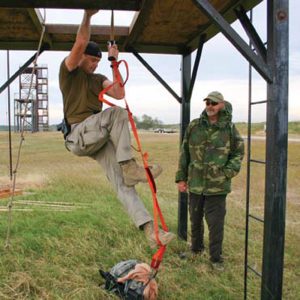
Before the event began, TJ briefed everyone and provided them a map of the compound. This contained a list of the tasks and challenges they would encounter. TJ stressed there was no shame in passing on a challenge if something looked like it might be a problem. After all, the goal was to go to work the next Monday.
He purposely left some of the instructions vague, as would become evident in the first challenge: engaging a 12” wide silhouette target with long guns from prone at 200 yards.
The participants were told they had a minute to engage the target with 30 rounds, and that after 30 seconds the target would begin moving. The shooters fired at the target one at a time. The first shooters paced themselves to fire an equal number of rounds at the target when it was stationary and moving.
But when a later shooter fired all his rounds before it started moving,
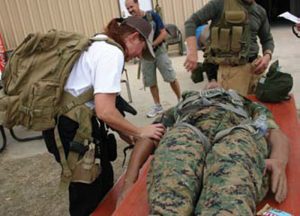
subsequent shooters followed suit. The elasticity of the rules allowed some people to game it, firing their 30 rounds before the target started moving. In the future, TJ intends to make the rules more specific.
With the exception of a single AK, all of the participants employed an AR variant. Surprisingly, three out of 35 shooters were not able to complete this simple exercise without experiencing a malfunction in their ARs.
It’s a pretty sad state of affairs when your designated self-defense gun cannot get through 30 rounds without a malfunction. It also reflects poorly on the users that they did not previously fire enough rounds through their gun and magazines to establish reliability before trusting their lives to them.
OVER THE WALL
Next, it was time to climb over an eightfoot wall before using a handgun to engage five clay pigeons at 50 feet, then hop over a shorter wall and engage five reduced-size, upper-body-shaped steel targets. Helping other participants was allowed when it came to overcoming obstacles. There was a very strong spirit of completion rather than competition.
We saw one person experiencing multiple problems with his Beretta because of magazines that repeatedly locked the slide back with rounds still in them. It turned out these were used magazines that had been purchased at a police surplus store and not tested prior to the bug-out event.
THROUGH THE WINDOW
When participants had finished the handgun segment, they had to climb through a window before using their long guns to engage targets at 25 yards. But this event had an interesting twist: shooters had to hit a target with their designated number on it, and that number required at least 4X magnification to positively identify.
People without a pair of mini-binoculars or adequate scope were out of luck. TJ designed this segment to illustrate the importance of having optics that allow you to evaluate a situation that is beyond the capability of the naked eye.
Once the shooting portions of the drill were completed, participants continued on foot and encountered situations requiring tools from their backpacks, physical skills, and a great deal of resourcefulness.
TOOL-BASED CHALLENGES
Some tasks were simple but impossible without the right tools, such as clipping off a piece of chain link and cutting a piece of 4×4, both of which had to be surrendered later for credit.
Other tasks required both tools and ingenuity, like recovering a key from a pair of metal drums welded together to create a six-foot deep container that simulated a storm drain. Some people used magnets or fishhooks on wires or string. Others, who were observing their environment and noticed the bamboo stand 100 yards away from the drum, used tape wrapped sticky-side out around a bamboo pole.
PHYSICAL TESTS
Some of the drills were more physical. Participants had to climb up a rope to a platform located eight feet off the ground. Some climbed the rope on their own, while others required a boost. One man brought an ingenious rope ladder that made the task quicker and much less tiring. TJ explained the reason for this task was that people have drowned in hurricanes and floods because they were unable to get up into their attics.
The most physically demanding challenge was traversing two cargo containers set 30 feet apart without touching down between them. Each container had protruding vertical poles on its roof. The far one had to be lassoed and the near one tied off. This stage required the participant to have suitable rope plus the skills and thoughtfulness to pull it off.
Some people passed on this quest (and received a time penalty) because they lacked the necessary rope; others gave up after spending a lot of time trying to complete it. One contestant took a plunge from a few feet off the ground while traversing the gap when his rope did not hold due to insufficient knot work.
GEAR WORK
Other challenges required specific gear and competitors had to prove they knew how to use it, such as treating a gunshot wound on a mannequin with first-aid supplies they’d been carrying. Other tasks, for the sake of brevity and time, only necessitated that they demonstrate they had certain items—for example, matches or a lighter to start a fire. Everyone also had to show they had at least $100 in cash that would come in useful for obvious reasons.
FINISH LINE
The top time was four hours and 44 minutes, followed by four hours and 50 minutes. The rest of the times varied, with the longest being 12 hours and 46 minutes. These times included time penalties for not completing events or missing shots. Though no serious injuries took place, two of the 35 participants did not finish.
People in the middle of the pack needed an additional piece of equipment: rain gear, as they were caught in an unexpected Texas downpour.
KEYS TO SUCC ESS
The completion of the Bug-Out Drill required the right equipment, but more importantly, stamina and ingenuity. Many people focus on equipment because they can buy it. But equipment alone will not get you through a disaster. You must have the skills to use it effectively, plus knowledge, judgment, and resourcefulness.
While not every item is applicable or necessary in every situation, there is no way of knowing in advance what you might need—and needed items can become starkly dramatic by their absence. This reinforces the value of having a varied toolbox and skill set and the flexibility to adapt.
The importance of testing equipment was driven home by the firearm and magazine failures that occurred in this relatively low round-count event.
Regardless of where each participant finished, the Bug-Out Drill made it clear to them what their strengths are and what they need to work on.
While certain key elements and skills will always prove essential, TJ Piling is committed to providing a new bug-out experience at Tiger Valley every year.
